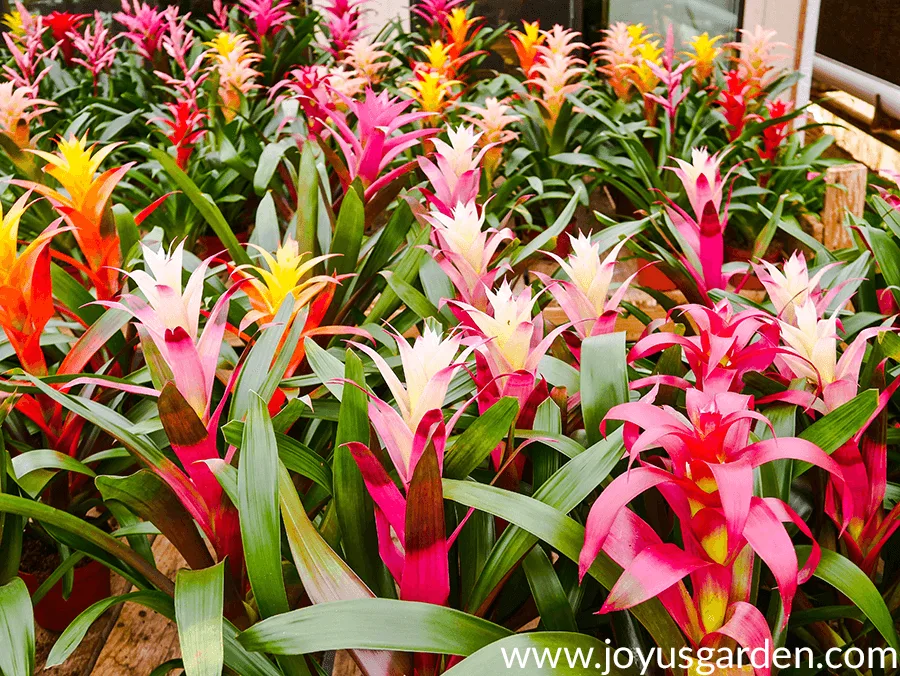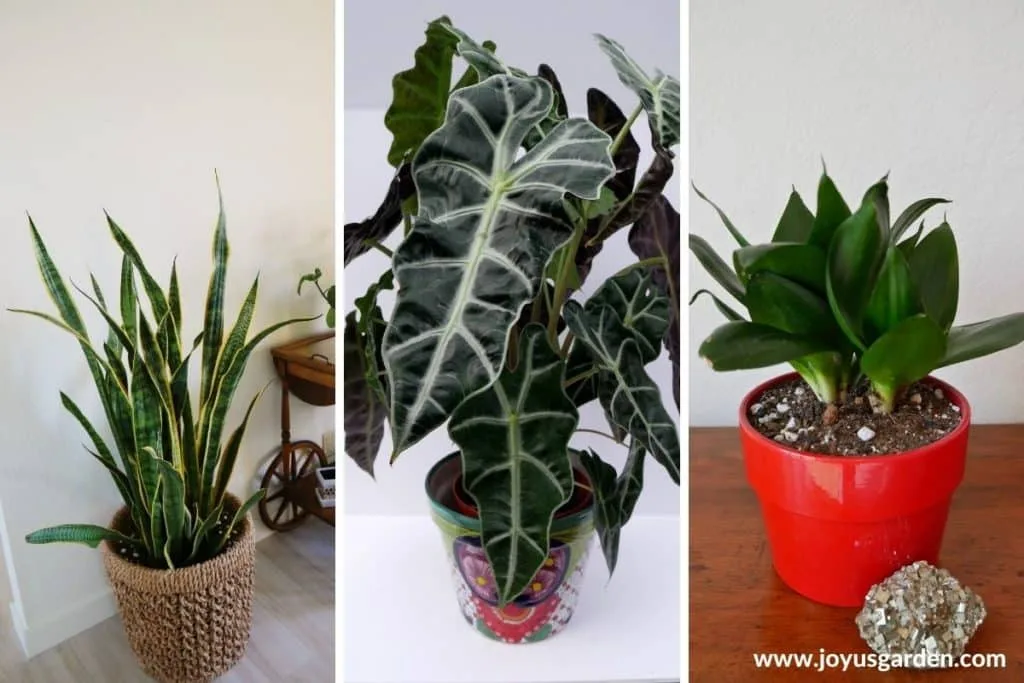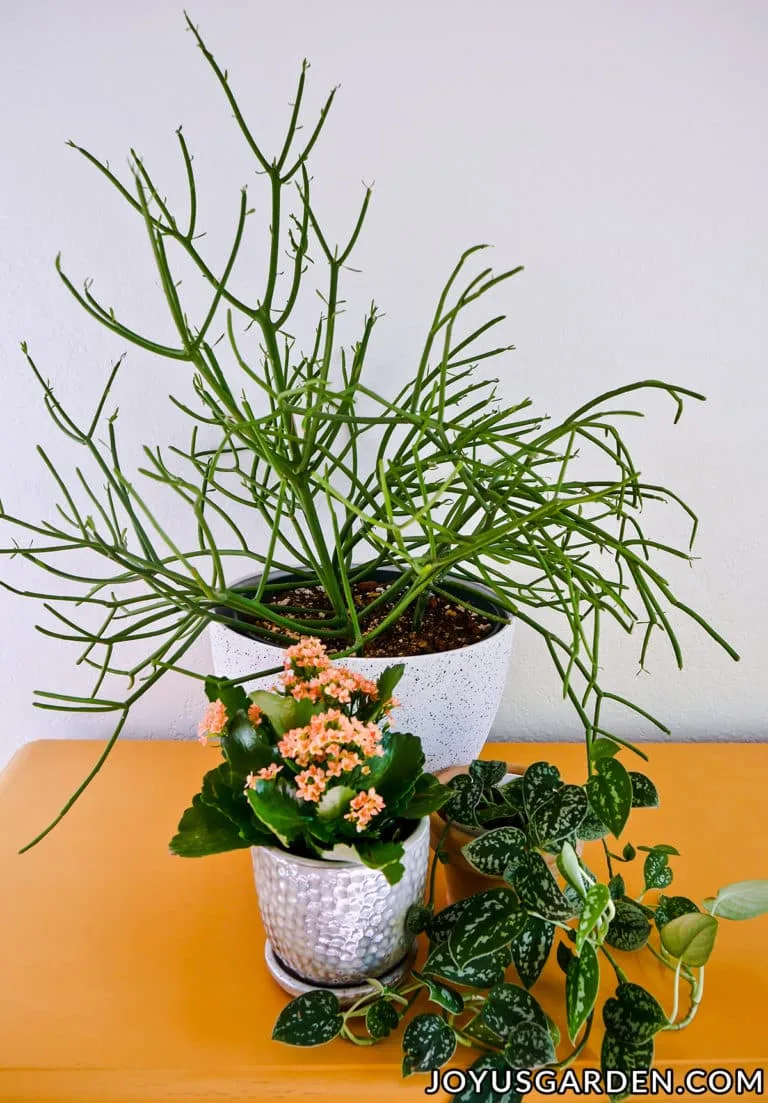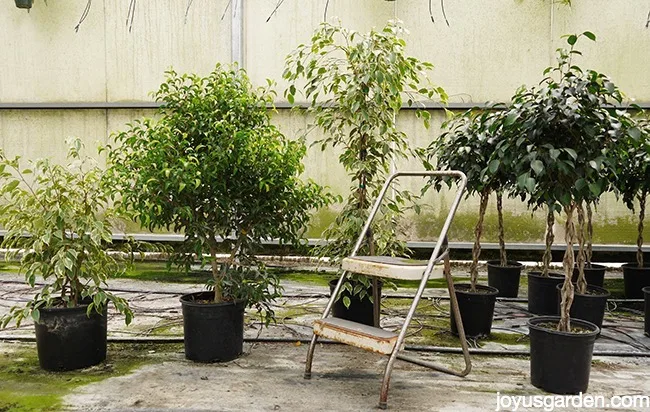Indoor Plants In Winter: Key Care Tips To Keep Houseplants Alive
Here are key care tips for indoor plants in winter, so you can keep your houseplants alive and healthy during the cooler, darker months.
When watering my houseplants the other day, I got to thinking about how I do it differently in the cooler, darker months.
I wasn’t going to do a post and video solely on that subject but thought, why not cover more points and go the whole nine yards?
In a nutshell, this outlines how to keep houseplants alive in winter.
How to Care for Indoor Plants in Winter
Indoor plant growth slows in the winter months so I basically leave mine be when it comes to fertilizing, pruning, and repotting.
Come spring, when the days start to warm up and daylight hours get longer, is when you’ll see them liven up and start to grow.
Oh, we do love that fresh spring growth! Even though our indoor plants aren’t growing much in winter, they certainly do liven up the drearier months.

Be sure to scroll to the bottom because I answer some commonly asked questions about indoor plant care in winter.
Some Of Our General Houseplant Guides For Your Reference:
- Guide To Watering Indoor Plants
- Beginner’s Guide To Repotting Plants
- 3 Ways To Successfully Fertilize Indoor Plants
- How to Clean Houseplants
- Plant Humidity: How I Increase Humidity For Houseplants
- Buying Houseplants: 14 Tips For Indoor Gardening Newbies
- 11 Pet-Friendly Houseplants
Watering Houseplants in Winter
1. Cut back on the frequency of watering.
Unless you keep your home at sauna-like temps, the soil won’t be drying out as fast. Therefore, the roots won’t need as much water at this time.
I live in Tucson, Arizona which is hot and dry for 5 months of the year. I water my houseplants roughly every 7 days in the warmer months.
In winter I cut back the frequency back to every 10 – 21 days.
How often you water your plants at this time of year will vary depending on the type of plants you have, the pot sizes and soil composition, light conditions, degree of humidity, and how warm or cool your home is.
2. Decrease the amount of water.
Not only do my plants get less water when it comes to frequency, but I cut back on the volume also.
My houseplants are watered roughly 25% less in winter.
With most plants, the roots go close to or all the way to the bottom of the pot. I have a larger watering can that I use in the summer and a smaller one to use in the winter.
This prevents me from watering too much and keeping the soil too wet.
This is especially true when it comes to my large floor plants with a lot of soil mass. This helps to prevent it from staying too wet towards the bottom of the pot.
3. Use room temperature water.
Houseplants are resting at this time and don’t appreciate the shock of ice-cold water.
I use room temperature water for my indoor plants year-round, not only in winter.
4. Don’t let too much water collect in the saucer.
A little bit of water trickling out into the saucer is fine.
You don’t want to submerge the bottom of the grow pot in 1-3″ of water as it will eventually cause the roots to rot.
If it sits on layers of pebbles or rocks that’s fine – more on that under the “Humidity” below.

Light / Exposure
5. You may have to move your plants.
The winter months are darker and the shorter days limit the amount of sunlight.
If you feel your plants aren’t getting the amount of light they need, then move to a different location where they’ll receive more light.
If you move them closer to a window, just make sure they’re not up against the cold glass or catching any drafts from a window.
If your plants sit on any window sills, you may have to move them also.
6. Rotate them if need be.
If the light source is coming from 1 side, then houseplants need to be rotated even in winter.
I rotate mine every month or 2 depending on how they’re looking.
Fertilizing / Feeding
7. Back off on the fertilizer at this time.
Remember, houseplants rest at this time and go dormant or semi-dormant. They don’t need or want to be fed at this time.
Wait until the weather warms and the days get longer.
When spring rolls around, this is how I fertilize my houseplants.

Repotting / Transplanting
8. Hold off on repotting or transplanting.
Just like fertilizing or feeding, spring, summer and even early fall (depending on your climate) are the optimum times to repot.
Temperature
9. Keep your houseplants away from direct heat sources.
Move your plants away from any heating vents, keep them off any standing heaters, and don’t put them right next to working fireplaces.
10. Keep them away from any cold drafts.
If you have plants near any doors that open regularly, move them.
Just like being next to a heat source, they don’t like cold air drafts. This goes for windows too if the glass is cold.
11. Houseplants don’t mind being a bit cooler at night.
I’ve learned this over time. I grew up with a home greenhouse off our dining room and the temp was kept around 45F.
The sun warmed it during the daytime but in the evenings, it cooled.
Now we set the temperature in the house back to 64 or 65 every night (love a cool bedroom for sleeping!) and the plants are fine.

Humidity
12. Your plants may need a boost at this time.
Most houseplants are native to the tropics or sub-tropics and are raised in greenhouses. The heat in our homes can be dry.
I live in the Arizona desert where the air is dry all the time, except for when the summer monsoons roll around so I’m all too familiar with this.
You can up the ante on the humidity factor by misting or spraying the air around them once or twice a week in the morning.
If the foliage stays too wet for too long, fungal disease could become an issue.
I take some of my tropical plants to the shower every month or so.
My small houseplants get a trip to the kitchen sink and get watered and sprayed.
I also run a couple of small humidifiers in the rooms where my plants are. I don’t run them every day – about 4 times a week.
Related: Increase Humidity for Plants

13. Pebbles in water in plant saucers.
This will give the plants a bit of moisture in the air directly around them.
Just make sure the roots aren’t submerged in the water.
Cleaning
14. It’s a good project to do in winter.
Pick a snowy, cold day and clean your plants. Heat can blow a lot of dust around. The leaves of your plants need to breathe and a build-up of dust can prevent this.
A damp cloth or rag does the trick as well as a good spraying.
And don’t use a commercial leaf shine. It blocks the pores and hinders their breathing process.
Cleaning the dust & build-up of your houseplants is always appreciated. This is all about Cleaning Indoor Plants detailing how & why I do it.

Pests
15. Keep your eye out.
Spider mites and mealybugs seem to explode in the late fall/winter when the heat is turned on. Fungus gnats can appear if you keep the soil too wet.
Take action as soon as you see evidence of any pest because they spread from plant to plant.
Also, they’re much easier to get under control if you catch them early on.
You can spray or treat in winter; more on that in the posts.

Decorative Covering
16. Remove or push back.
Decorative covering like moss or large river rock or beach pebbles should be removed or pushed back so the soil won’t stay soaked.
This is good to do if you tend to overwater your plants. A thick layer of damp moss also encourages fungus gnats.
Winter Houseplant Care Video Guide
Indoor Plants In Winter FAQs
Do you water plants in winter? How often should you water houseplants in winter?
Yes, you’ll want to water them at this time. An exception would be if you’re forcing the plant into dormancy such as an Adenium brought indoors for the winter.
How often depends on the type of houseplant, pot size, soil composition, light exposure, and temperature of your home.
I can tell you that water less often in winter than in the warmer months when plants are more actively growing. I’ve done lots of guides on Houseplant Care for your reference.
Why are my houseplants dying in winter?
The most common reasons are too much water and lack of light along with low humidity and insect infestations.
Is it bad to repot houseplants in winter?
It’s not the optimum time. Winter is the season for houseplants (like outdoor plants) to rest. I prefer to leave mine be from mid-fall through late winter. If your plant has taken a tumble & you must repot it, then go ahead.
Should I mist my houseplants in winter?
Misting increases the moisture of the air (very temporarily) around the houseplant. Spraying the leaves doesn’t increase the humidity. Because many indoor plants are tropical, it must make them feel good!
I do lightly mist some of my indoor plants in winter every 2-3 weeks or so in the morning. If the foliage stays too wet for too long, fungal disease could become an issue. It hasn’t been a problem for me because I live in the desert. It may be a different story for your plants depending on your climate.
The exception for me is my Air Plants. I soak them once a week and mist them once a week year-round.
What is the lowest temperature for houseplants?
I set my thermostat back to 64F at night and my plants do just fine. Most of them prefer it a bit cooler when darkness sets in.
I grew up with a greenhouse right off our dining room that was set to 45F in the colder months. The sun (if there was any in the New England winter months!) warmed it during the day. In hindsight, it might have been too cold for them but I don’t remember any plants dying because of this.
Most houseplants are tropical in origin and do like it warm especially during the daytime.
Can you fertilize house plants in winter?
I don’t because as I said above, it’s the time for them to rest. I back off on the fertilizing in mid-fall and pick it up again in late winter. We have a long season of growing here in Tucson so you may only need to fertilize your plants from mid-spring through the end of summer.
If you feel the need to feed yours in winter, do it at 1/2 strength.
Why do my indoor plants have mold on the soil in winter?
This white mold isn’t harmful to the plant but it is a sign that the soil has been kept too wet. You can scrape it off and back down on the watering.
How do I keep my indoor plants warm?
Keeping my indoor plants warm has never been an issue because I have always kept my homes at a comfortable temperature for me and others. If you’re going away for a work trip or vacation and want to turn your thermostat back, you can group your plants together and try wrapping a blanket around the pots.
Should I move my plants away from the window in the winter?
Most windows are cold to the touch in winter, especially after dark. It’s a good idea to keep your plants off window sills and away from cold drafts. They would most likely appreciate being near a closed window, but not touching the glass.
When should I bring my tropical plants inside for winter?
If your plants have been outdoors for the summer, you should bring them indoors before the temperatures drop below 50-55F.

Key Takeaways
The key points to focus on at this time of year are watering and exposure. Most houseplants thrive in bright light. In late fall and throughout winter, lower light levels set in.
If your plants are looking sad, one reason could be the need for more light for the darker months. Move them to a brighter location.
It’s very easy to water indoor plants too much at this time of year so cut back on the frequency and amount.
Plants add so much life and beauty to our homes and can survive winter just fine if properly cared for. I let mine rest in the winter and go through their natural cycle.
You can pamper them in spring, summer, and early fall. I hope you find this guide on winter houseplant care to be helpful!
Happy (Indoor) gardening,

This guide was first published in January 2019. We updated this guide in January 2021 & then again in October 2022 to answer some of your frequently asked questions.
Want to learn more about houseplants? Take a look at these articles too!
- Indoor Succulent Care Basics
- Low Light Easy Care Houseplants
- Easy Care Floor Plants
- Easy Tabletop and Hanging Plants
- Easy Care Office Plants For Your Desk
- 28 Common Houseplants
This post may contain affiliate links, you can read our policies here.
- About the Author
- Latest Posts
Nell, the founder of Joy Us garden, was born into a gardening family and grew up in Connecticut’s countryside. After living in Boston, New York, San Francisco, & Santa Barbara, she now calls the Arizona desert home. She studied horticulture & garden design, working in the field all her life. Nell is a gardener, designer, blogger, Youtube creator, & author. She’s been gardening for a very long time & wants to share what she’s learned with you.










Great article it gave a better idea on how to keep my plants safe in this cold weather
Thanks
You’re very welcome. We want to keep our plants happy & healthy! Nell